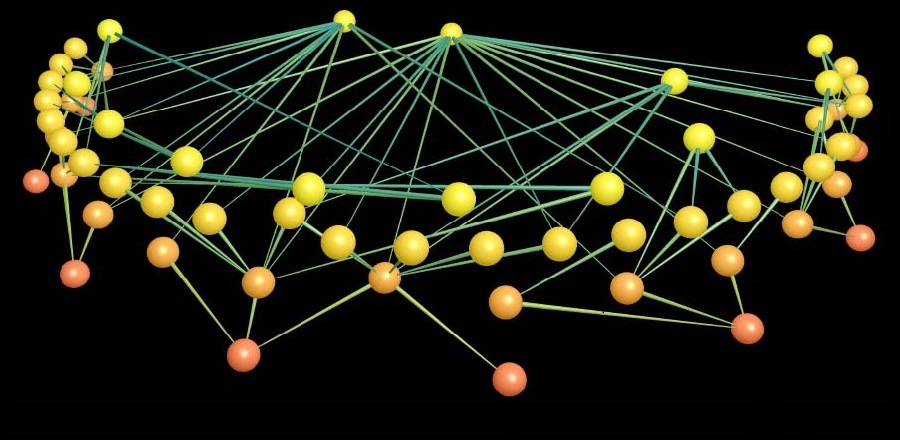
UK grassland trophic web. Artwork from food webs.org
Even if serious gaps in knowledge of biodiversity remain, much progress has been made in determining how many different types of organisms exist, what evolutionary relationships connect different lineages to a common ancestor, and where different species are distributed. Much less is known about the types of interactions that exist among species and the importance of such interactions for the maintenance and evolution of life on earth. But can biotic interactions be inferred?
Such is the argument proposed in a recent paper published in the prestigious journal TREE (Trends in Ecology and Evolution), by Ignacio Morales-Castilla, Miguel Matias, Dominique Gravel and Miguel Araújo. The authors propose a conceptual framework to infer the ‘backbone’ of biotic interaction networks within ecosystems. The framework firstly identifies broadly interacting groups by ordering links and removing forbidden interactions between species. Secondly, additional links are removed by examination of the geographical context in which species co-occur. Thirdly, hypotheses are proposed to establish interaction probabilities between species.
The framework is illustrated using published food webs in terrestrial and marine systems. Results show that many biotic interactions can be successfully predicted by careful integration of data with theory.
Full understanding of the web of life seems distant, but sequentially building backbones of biotic interaction networks will help unravelling key interactions and their potential effects on the distribution of life on earth.
The full reference to the study is: Morales-Castilla, I., Matias, M.G., Gravel, D. & Araújo, M.B. 2015. Inferring biotic interactions from proxies. Trends in Ecology and Evolution. In press.